Keys to life: implementation framework and priorities 2019-2021 - easy read version
New framework to implement the 'Keys to life' learning disability strategy.
The Keys to Life: Implementation framework and priorities 2019-2021: Easy Read Version
What is this Information about?
This is the Easy Read version of The keys to life Implementation Framework for the years 2019 – 2021.
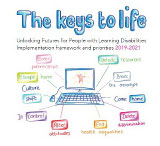
When you see a word written in bold it will be explained.
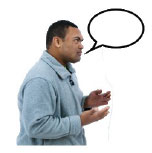
What is The keys to life strategy?
The keys to life is the learning disability strategy for Scotland.
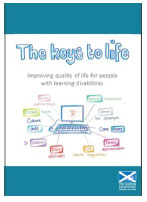
A strategy is a big plan.
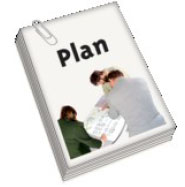
The keys to life came out in 2013.
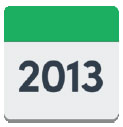
The keys to life says what the Scottish Government and COSLA think needs to happen to make Scotland a good place for people with learning disabilities to live.
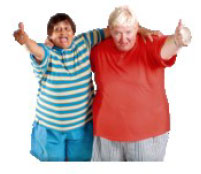
COSLA is a group of all the councils in Scotland.
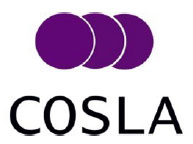
COSLA helps councils to work together.
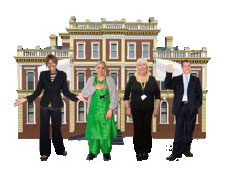
COSLA works with the Scottish Government to make sure the strategy works in every council area.
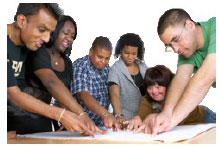
What is an Implementation Framework?
In 2015, the Scottish Government wrote an Implementation Framework. This is a plan to make The keys to life happen.

This Implementation Framework said what was going to happen to make the things in The keys to life happen.
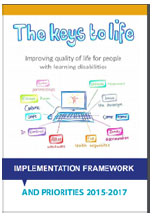
The last Implementation Framework was for the years 2015 to 2017.
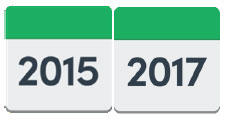
This easy read is about the new Implementation Framework.
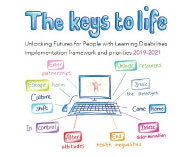
This new plan is for the years 2019 to 2021.
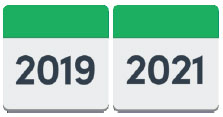
How the plan was decided
The Scottish Government has a strategy for all disabled people.
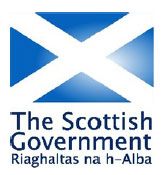
This is called ‘A Fairer Scotland For Disabled People.’
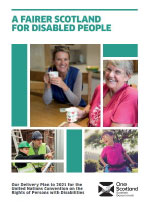
The keys to life and ‘A Fairer Scotland For Disabled People’ will work together.
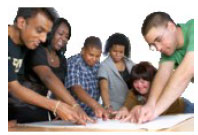
The keys to life talks a lot about making health better for people with learning disabilities.
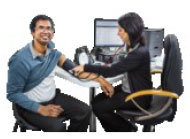
This plan will make sure people with learning disabilities are not just thought about as patients or service users.

This plan looks at lots of different things that matter to a person’s life.
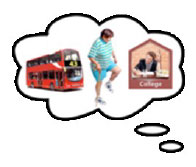
This plan will make sure people with learning disabilities of all ages are thought about.
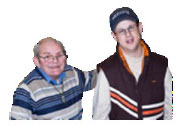
This plan will need people from different parts of The Scottish Government to work together.

This plan is about what people with learning disabilities can do instead of what they cannot do.

People with learning disabilities gave their opinions about what this plan should do.
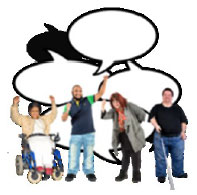
What is in the plan?
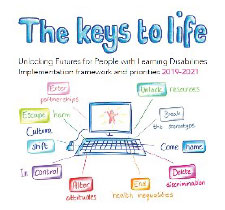
The plan has four themes.
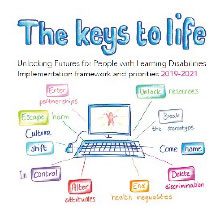
The four themes are living, learning, working and wellbeing.
Theme 1. Living: What did people say?
People with learning disabilities want choices about where to live.

People with learning disabilities are sometimes put in houses far away from family and friends.
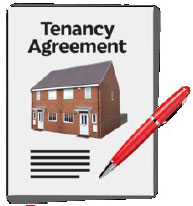
Public transport and buses are very important for people with learning disabilities.
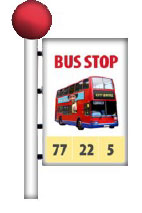
People with learning disabilities should be able to have safe and healthy relationships.
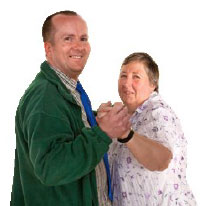
People with learning disabilities should have their rights to have and raise children protected.
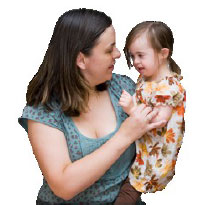
Women with learning disabilities who experience violence should have services to help them.
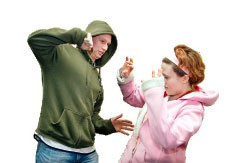
Theme 1. Living: What will we do?
Ask people who make decisions about housing to think about the needs of people with learning disabilities.

Try to make public transport easier for people with learning disabilities to use.
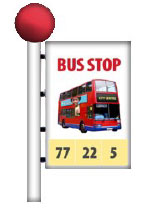
Provide more help and advice to parents with learning disabilities.
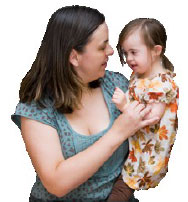
Support people with learning disabilities so they can safely have sex.

Protect women with learning disabilities from violence.

Theme 2. Learning: What did people say?
Teachers are very important in helping pupils with learning disabilites to do well at school.
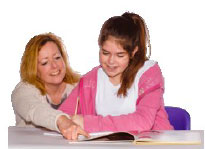
Teachers need more support so they can help pupils with learning disabilities.
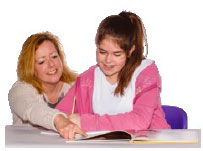
Tests and exams in school do not show what people with learning disabilities can do.

Transitions are when pupils go from a different time in their education to another like from Primary to Secondary School.
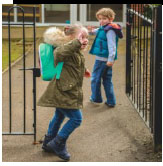
Transitions are difficult for pupils with learning disabilities.
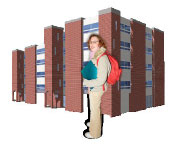
People with learning disabilites do not have enough choices at school and college.

Theme 2. Learning: What will the plan do?
Support children with learning disabilities younger than five years old.
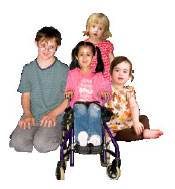
Provide better support and help for pupils with learning disabilities at school.
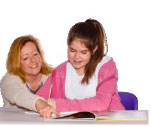
Make schools easier places for pupils with learning disabilities to learn and be happy.

Share examples and stories of how students with learning disabilites are doing well at college.
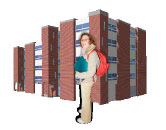
There is something called the Independent Living Transition Fund to help people with disabilties get extra help to live independently.

More people with learning disabilites should know about this fund to help them go to college or get training for a job.
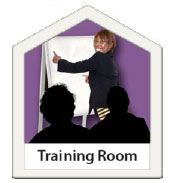
Theme 3. Working: What did people tell us?
Things like application forms and interviews for jobs are often very difficult for people with learning disabilites.
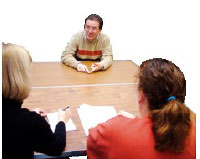
A supported employment service helps people to find and keep a job.
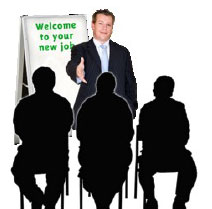
A job coach is someone who helps a person find and keep a job.
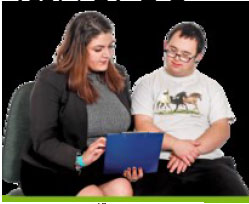
More employers should know about supported employment services and job coaches.
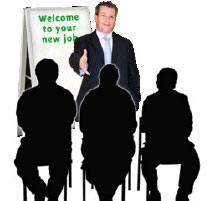
More employers need to know that people with learning disabilities can do a good job.

Theme 3. Working: What will we do?
Tell people how well people with learning disabilites can do when they get a job.

Work with NHS Scotland to help them employ more people with learning disabilities.
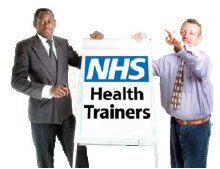
Make sure people with learning disabilites are included when information about who has been helped to find a job is collected.
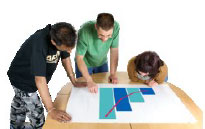
The Scotttish Government is doing new things to help people to find jobs.
We will make sure that these help people with learning disabilities.
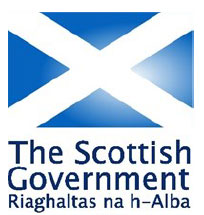
When people are going through transitions they will get help to find jobs.
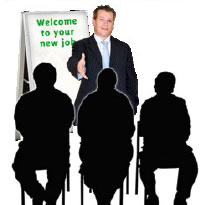
Theme 4. Wellbeing: What did people say?
Primary care is what people use to get help for medical problems at first.
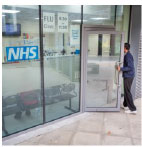
Going to the GP is an example of Primary Care.
This can be difficult for people with learning disabilities.
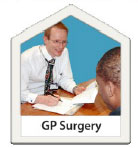
Letters and other information that people get about their health can be difficult to understand.

Self Directed Support is the way social care support is paid for in Scotland.
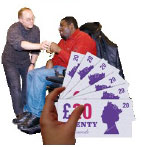
Self Directed Support should give people choice and control over the money for their social care.
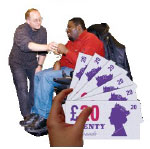
People with learning disabilites often do not know about Self Directed Support and are not supported well to make choices.
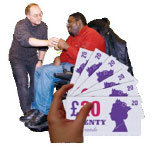
Theme 4. Wellbeing: What will we do?
Find and share good examples of how to help people with learning disabilites to go and see the GP.
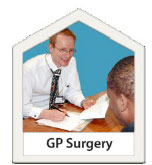
Screening is a way of finding out if people are ill before they show any signs or symptoms of being sick.
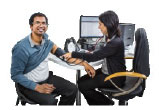
The plan will improve screening for people with learning disabilites to try and help them live longer lives.
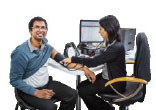
Some people with profound and multiple learning disabilites can display challenging behaviours.
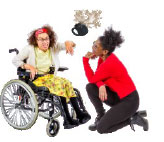
The words challenging behaviours are used to describe things that a person does when they are upset or frustrated.

The behaviour is called challenging because the person who is supporting them finds it difficult.

The plan says that a job should be created to find better ways for the person to express their frustration.
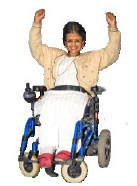
This can help more people to live closer to their families and to have more active lives.
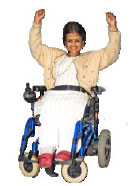
Make Self-Directed Support work better so people with learning disabilites have greater choice and control over their social care.
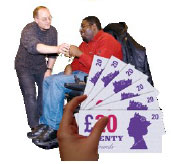
Work with Social Security Scotland so the new benefits system works for people with learning disabilities.
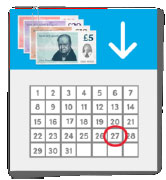
Health and Social Care Partnerships are run by a local authority and NHS board to make health and social care work better together.

The plan will help Health and Social Care Partnerships decide how to help people with learning disabilties.

Contact
Email: Arron.Ashton@gov.scot
There is a problem
Thanks for your feedback